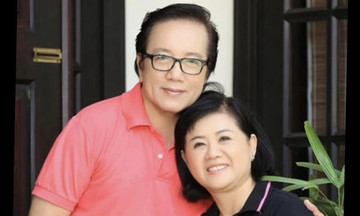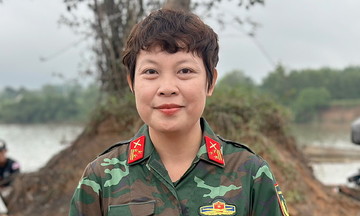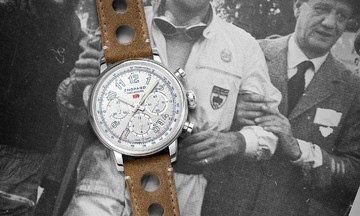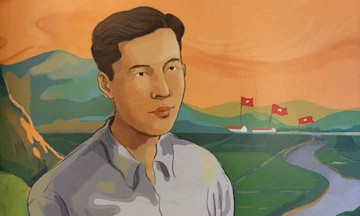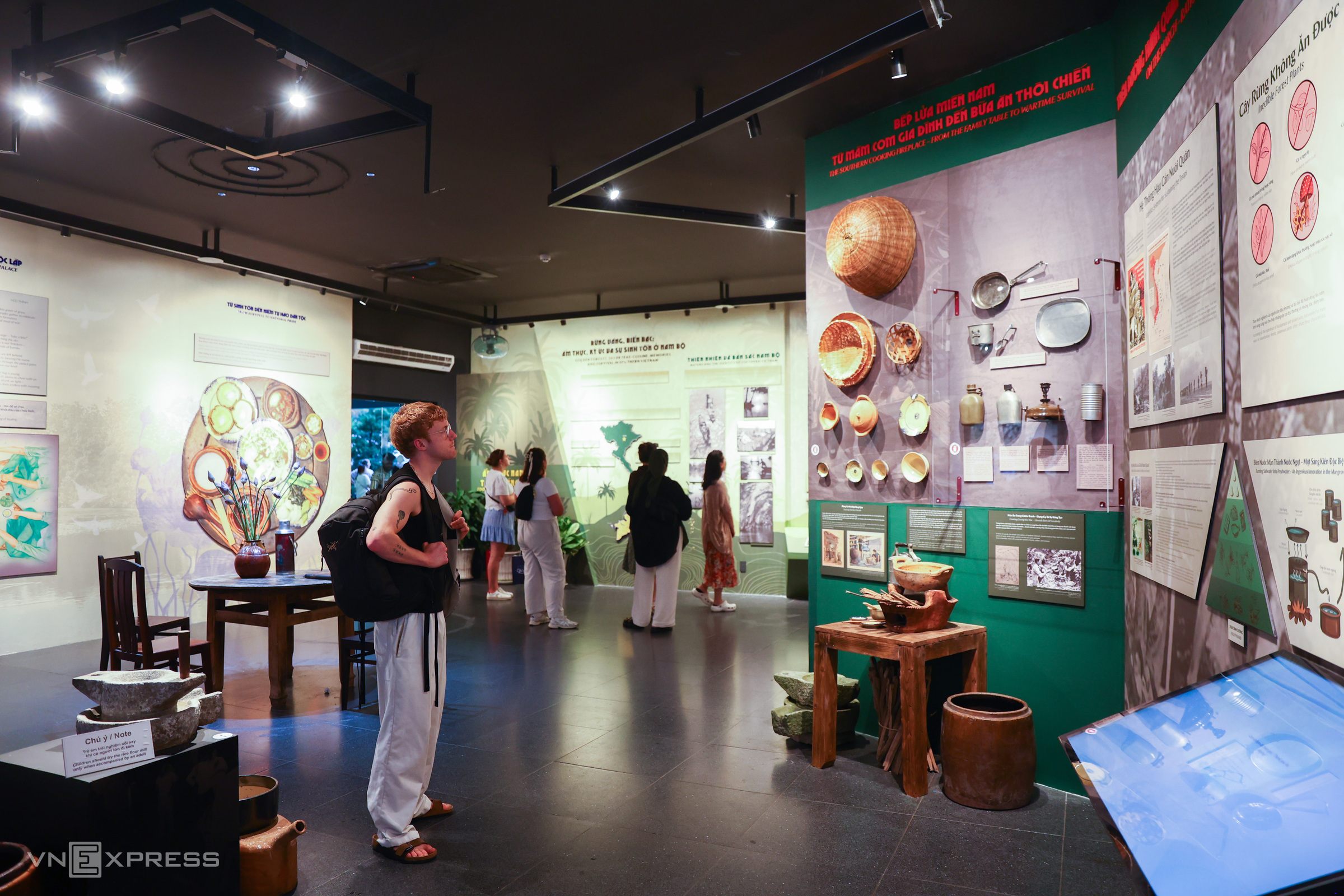 |
The War Remnants Museum's exhibition, "Southern Vietnamese Cuisine During Wartime," showcases the resourcefulness of soldiers and civilians through simple dishes. The exhibition commemorates the 80th anniversary of the August Revolution, National Day (2/9), and the museum's 50th anniversary. |
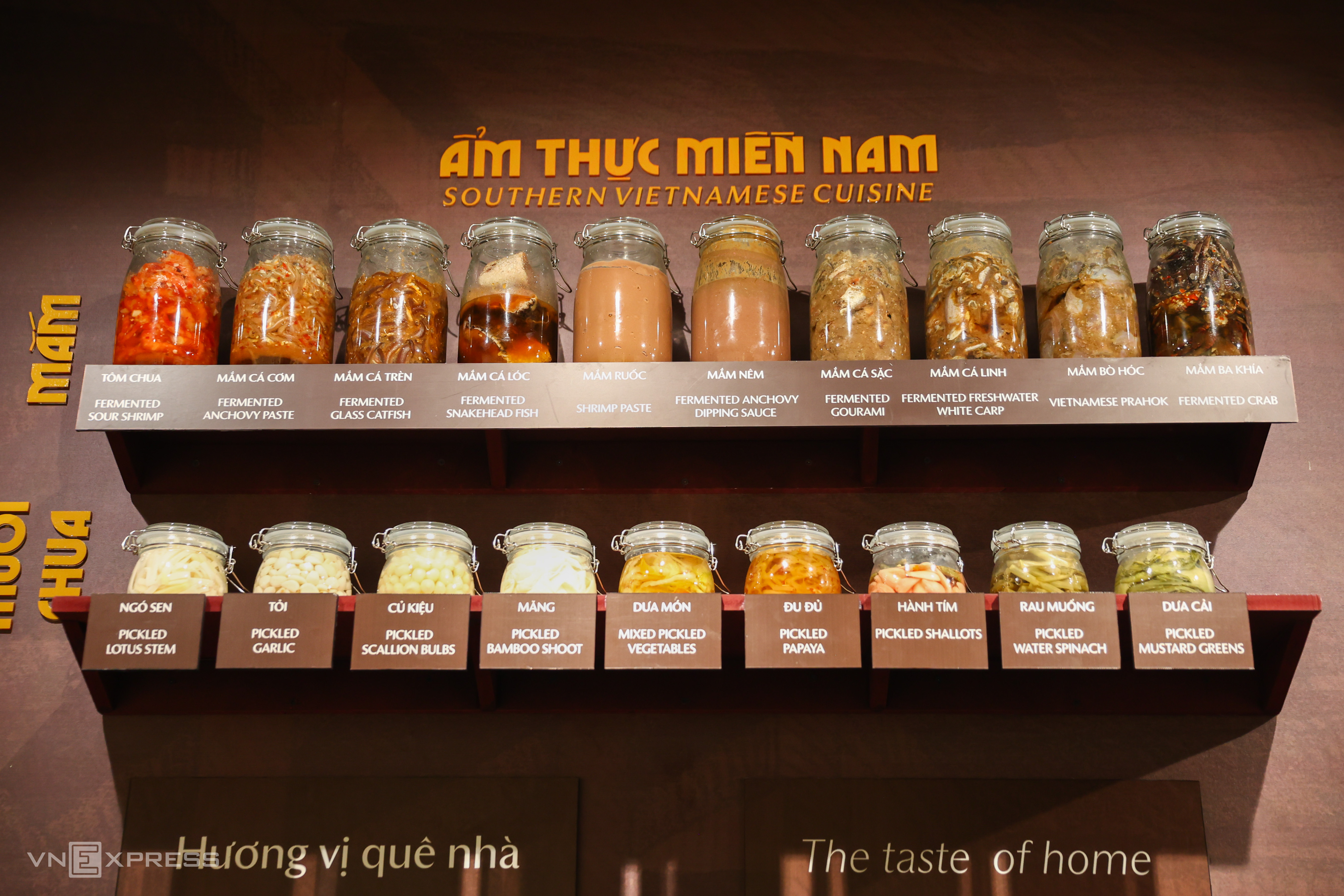 |
A cooking area features a clay stove, pots, ceramic bowls, and canteens. These items were integral to daily life, both during and after the war. |
 |
In addition to familiar items like bowls, plates, pots, and baskets, the exhibition includes specially designed gear for military campaigns, such as canteens, mess kits, trays, and water containers. |
The exhibition displays wartime cooking tools, spices, and common foods, highlighting southern Vietnam's cultural heritage. Paintings of the region's staple crops and fruits, such as rice, yellow velvetleaf flowers, water hyacinths, lotuses, bamboo shoots, and mangrove apples, greet visitors at the entrance.
Shelves lining the walls display fermented foods like shrimp paste, fish sauce, and pickled fish, allowing visitors to experience the aromas firsthand.
Fermented sauces are essential to southern Vietnamese cuisine. Their salty nature allows for preservation, adding rich flavors to simple jungle meals.
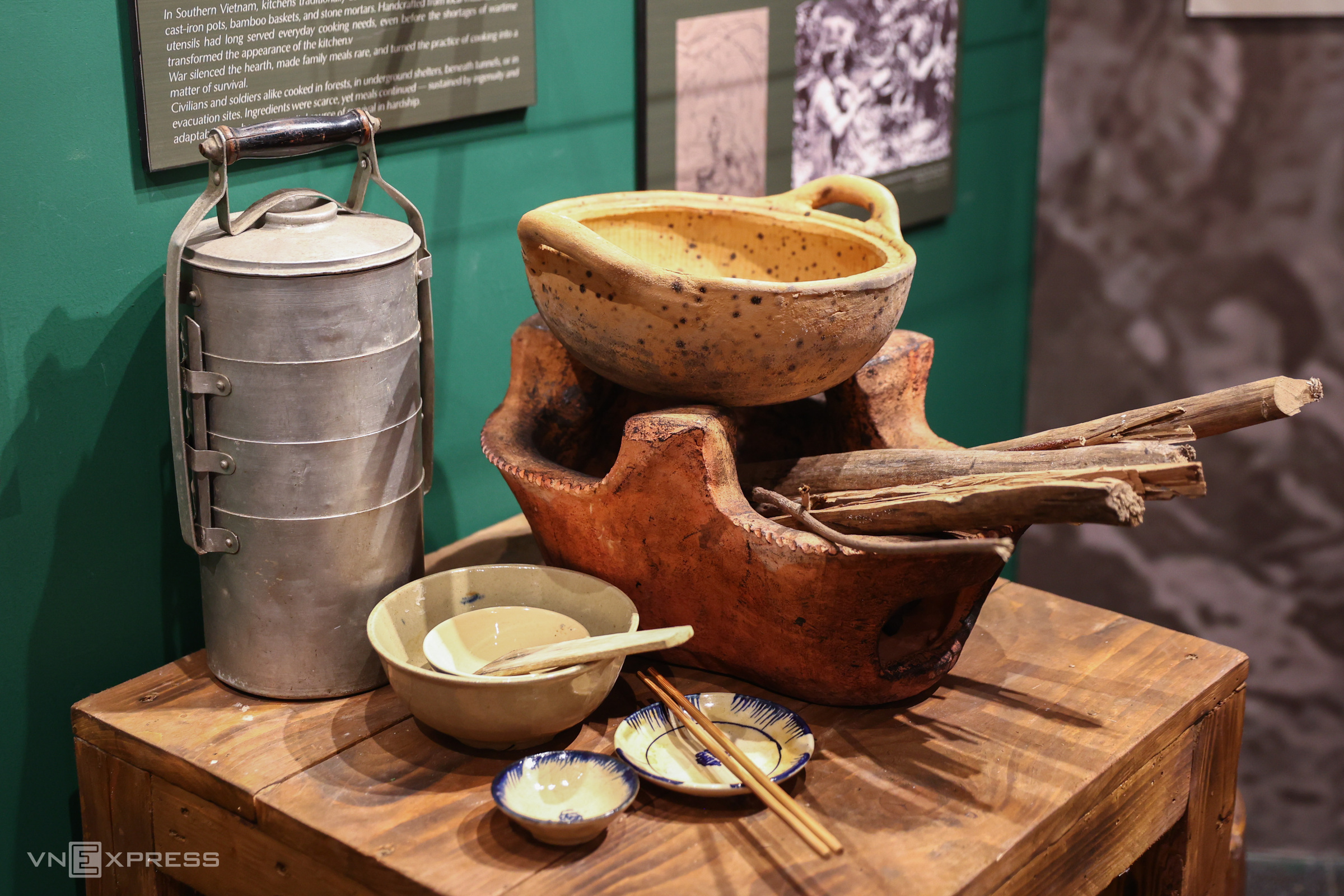 |
Mess kits, trays, cups, and spoons (first image) used by soldiers of the T2 performing arts troupe (1968-1975). The second image shows canteens, kerosene lamps used for cooking, and Guigoz cans used to store rice, food, and brew tea. Soldiers carried these essential items during their campaigns. |
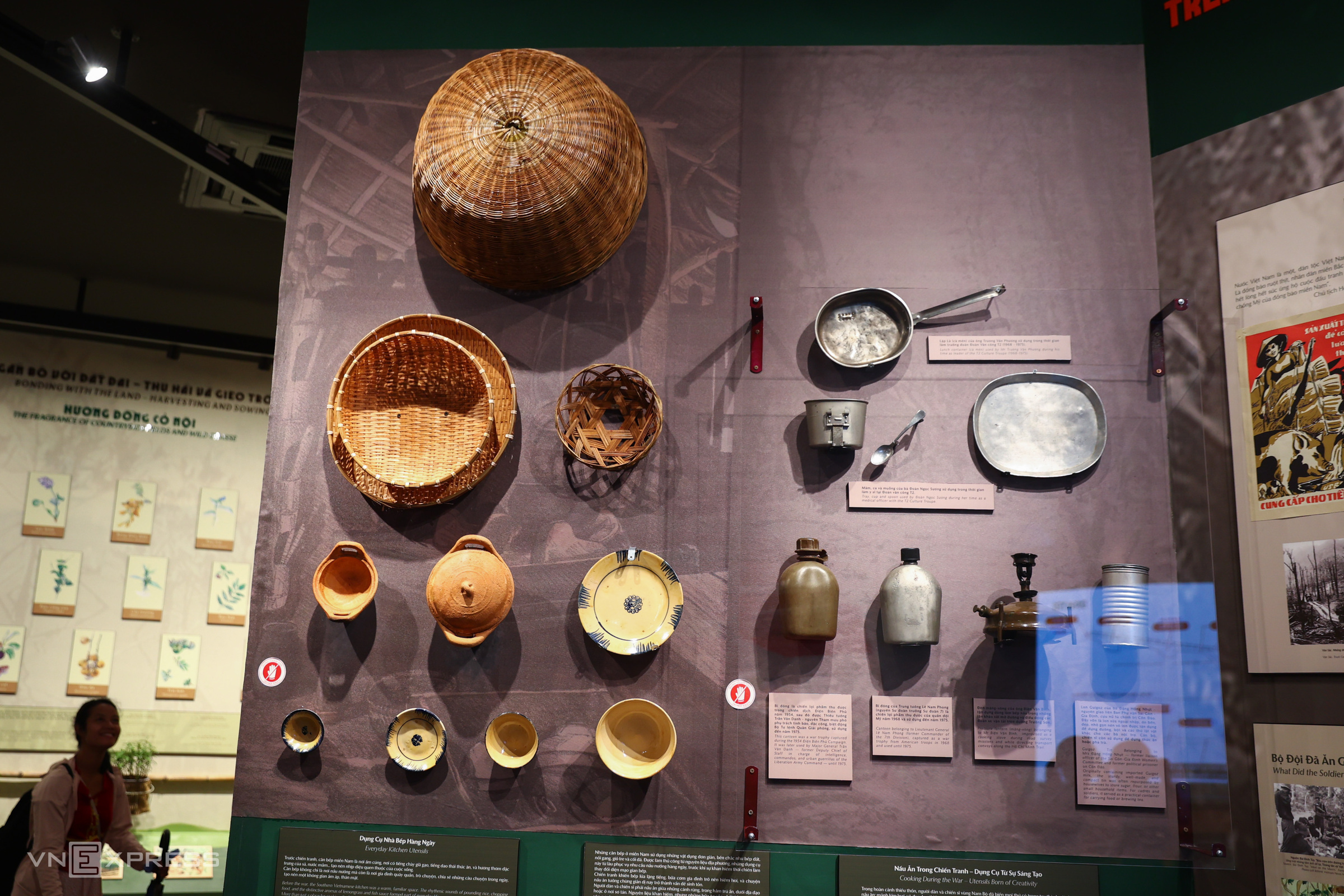 |
A foreign visitor examines how soldiers transported and stored food. |
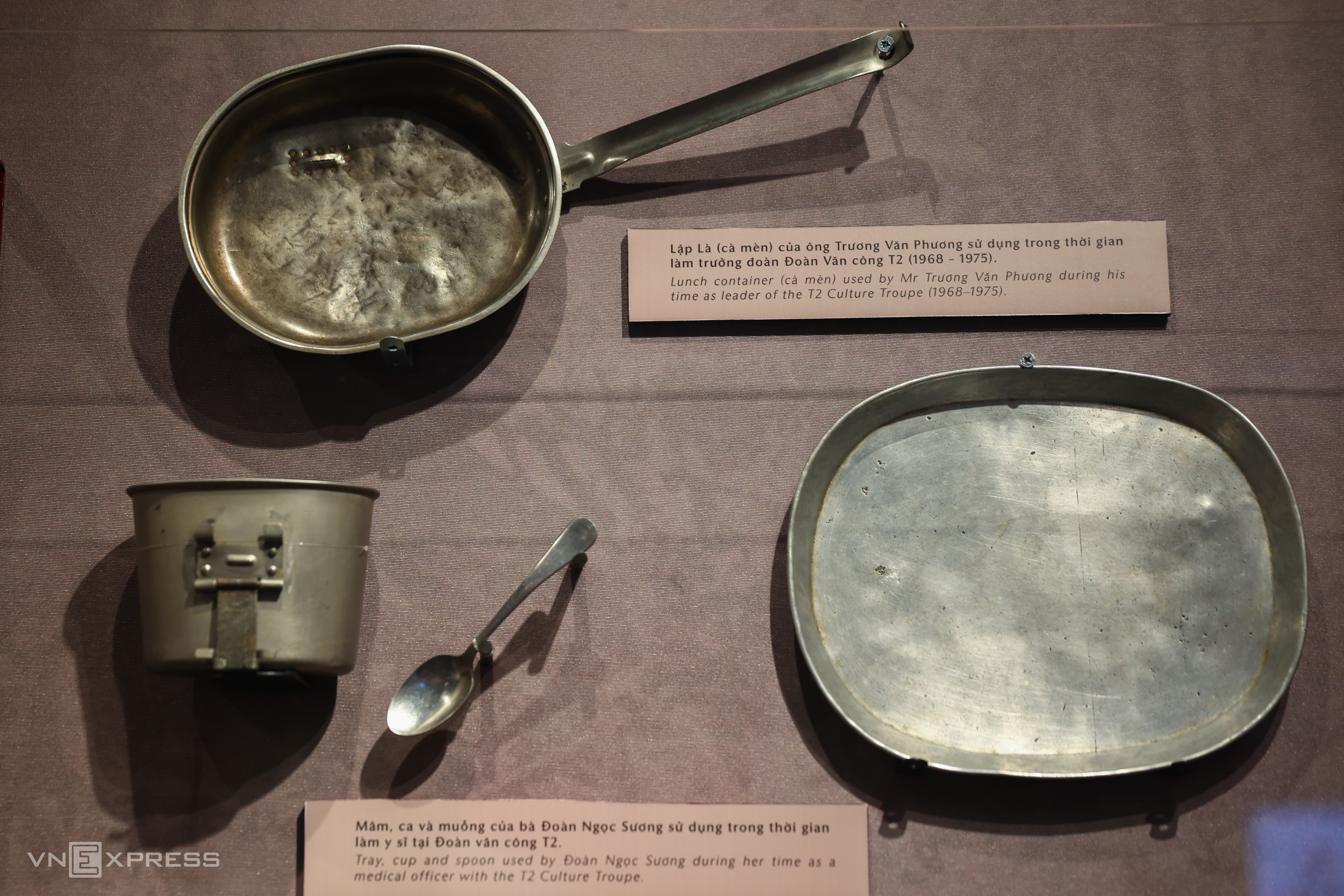 |
Visitors try grinding flour with a stone mill. |
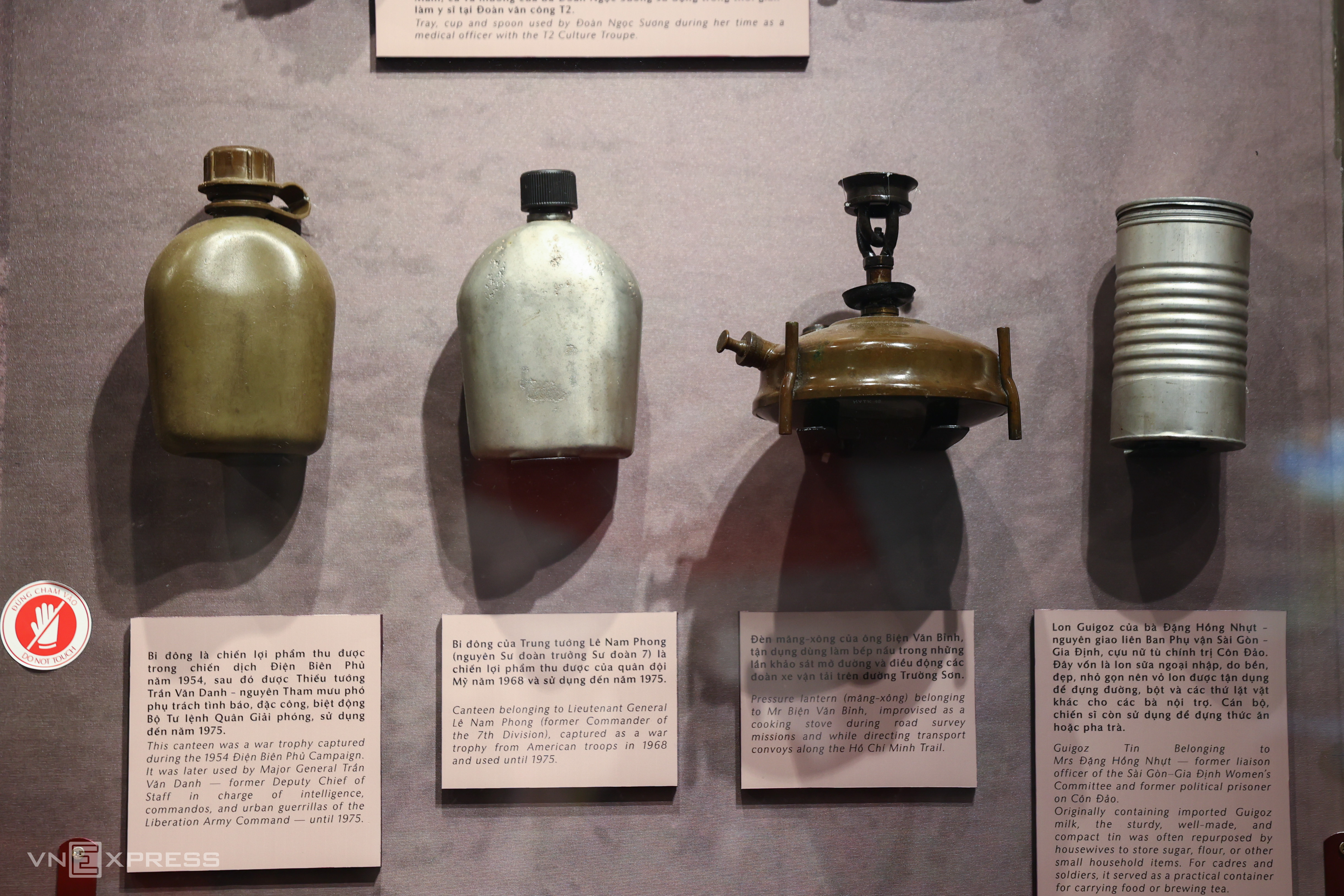 |
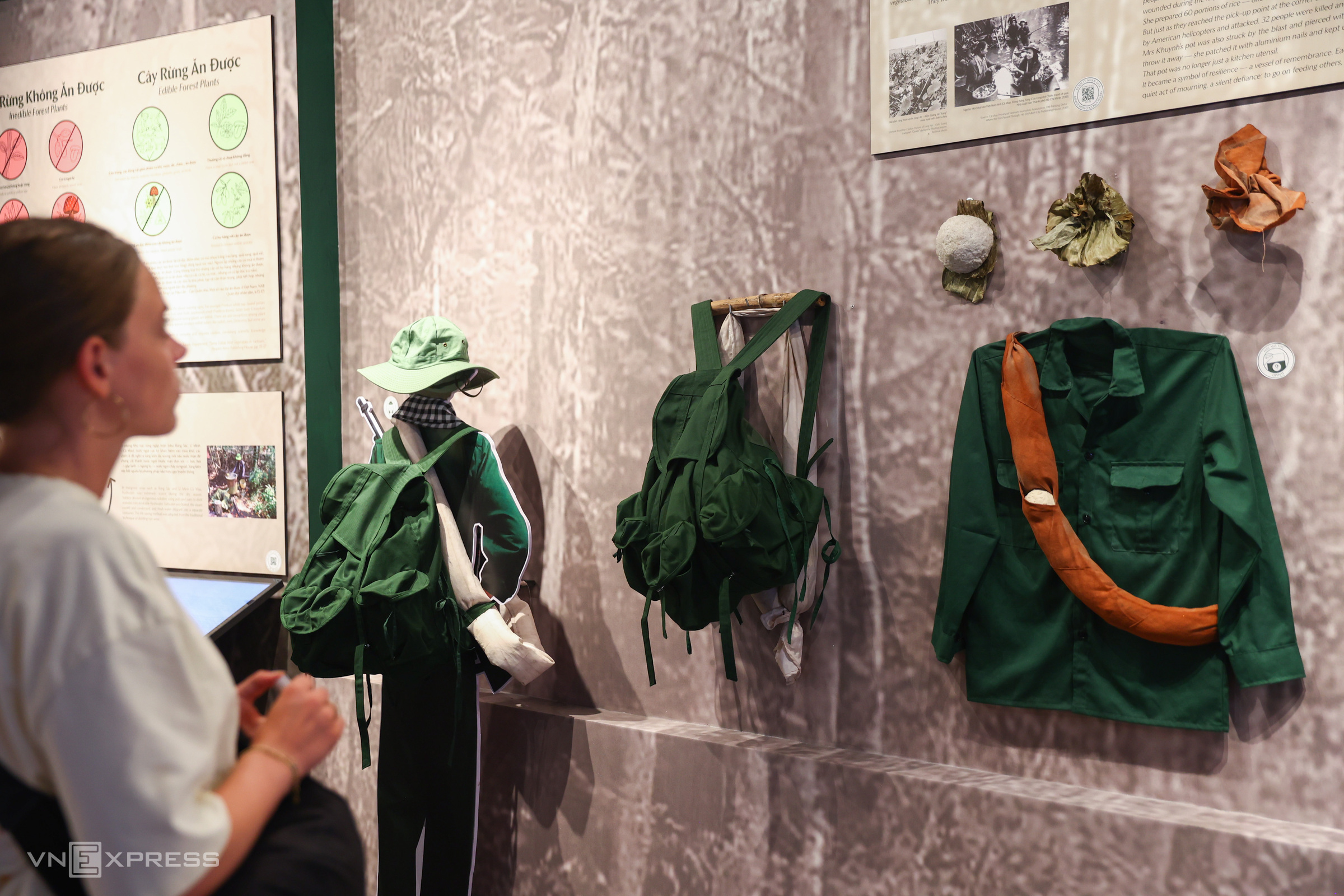 |
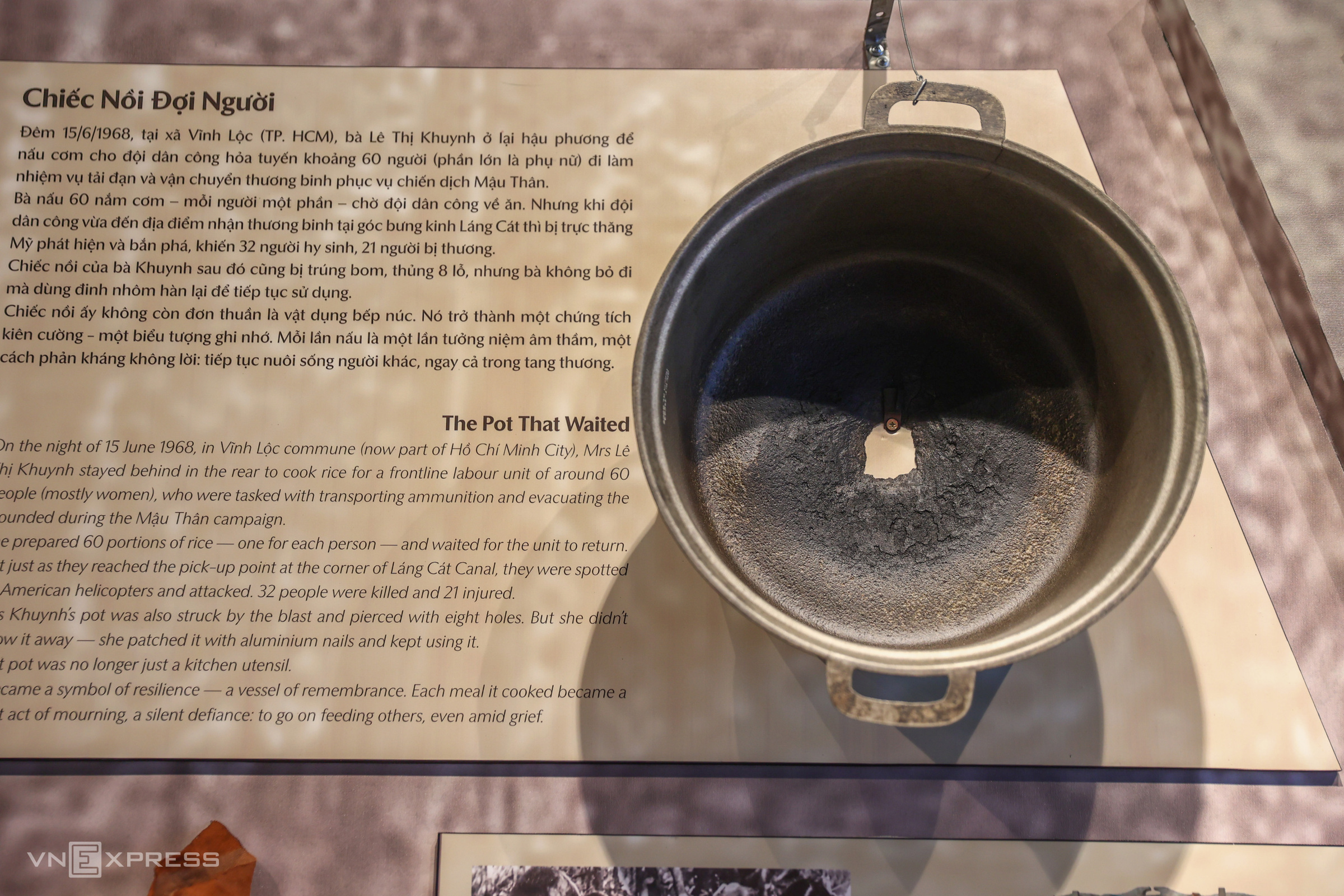 |
The exhibition also showcases how civilians supported the war effort by supplying food to the front lines.
A patched pot used by Le Thi Khuynh to cook for soldiers is on display. On the night of 15/6/1968, in Vinh Loc commune (TP HCM), Ms. Khuynh stayed behind to cook for a group of about 60 civilian laborers, mostly women, transporting ammunition for the Tet Offensive.
She prepared 60 portions of rice, but the unit was ambushed at the Lang Cat canal intersection. The explosion killed 32 people and injured 21. Although the pot was damaged, Ms. Khuynh repaired it and continued using it, transforming it from a simple cooking utensil into a testament to the war.
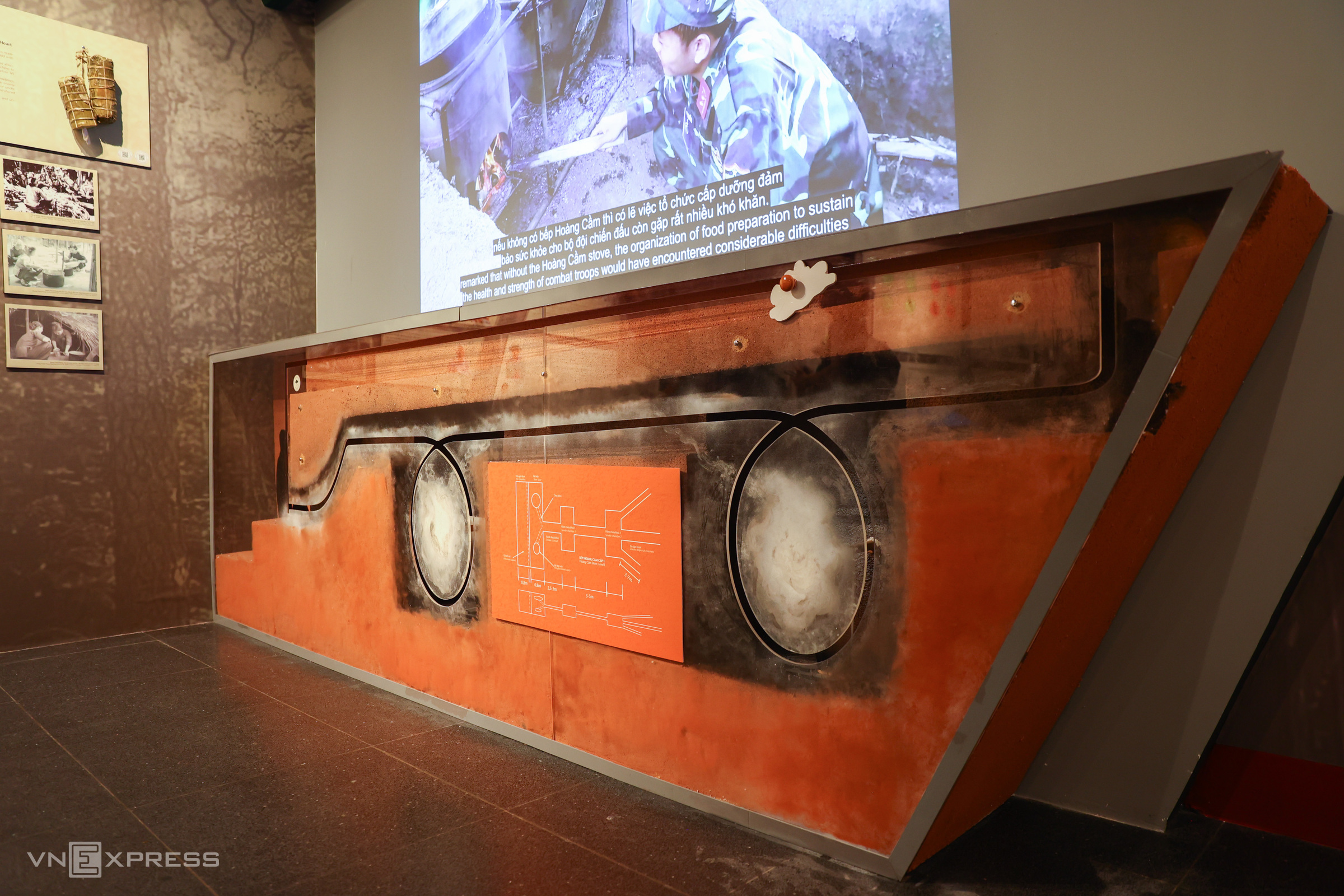 |
A model and video of the Hoang Cam stove are also featured.
This ingenious field stove, invented by soldier Hoang Cam in 1951 during the war against the French, was designed to be hidden underground. Its long, multi-directional smoke vents dispersed smoke quickly, making it difficult to detect. This design provided concealment, saved fuel, and was ideal for cooking in jungles or encampments.
The Hoang Cam stove became a symbol of the Vietnamese People's Army's resourceful "underground logistics."
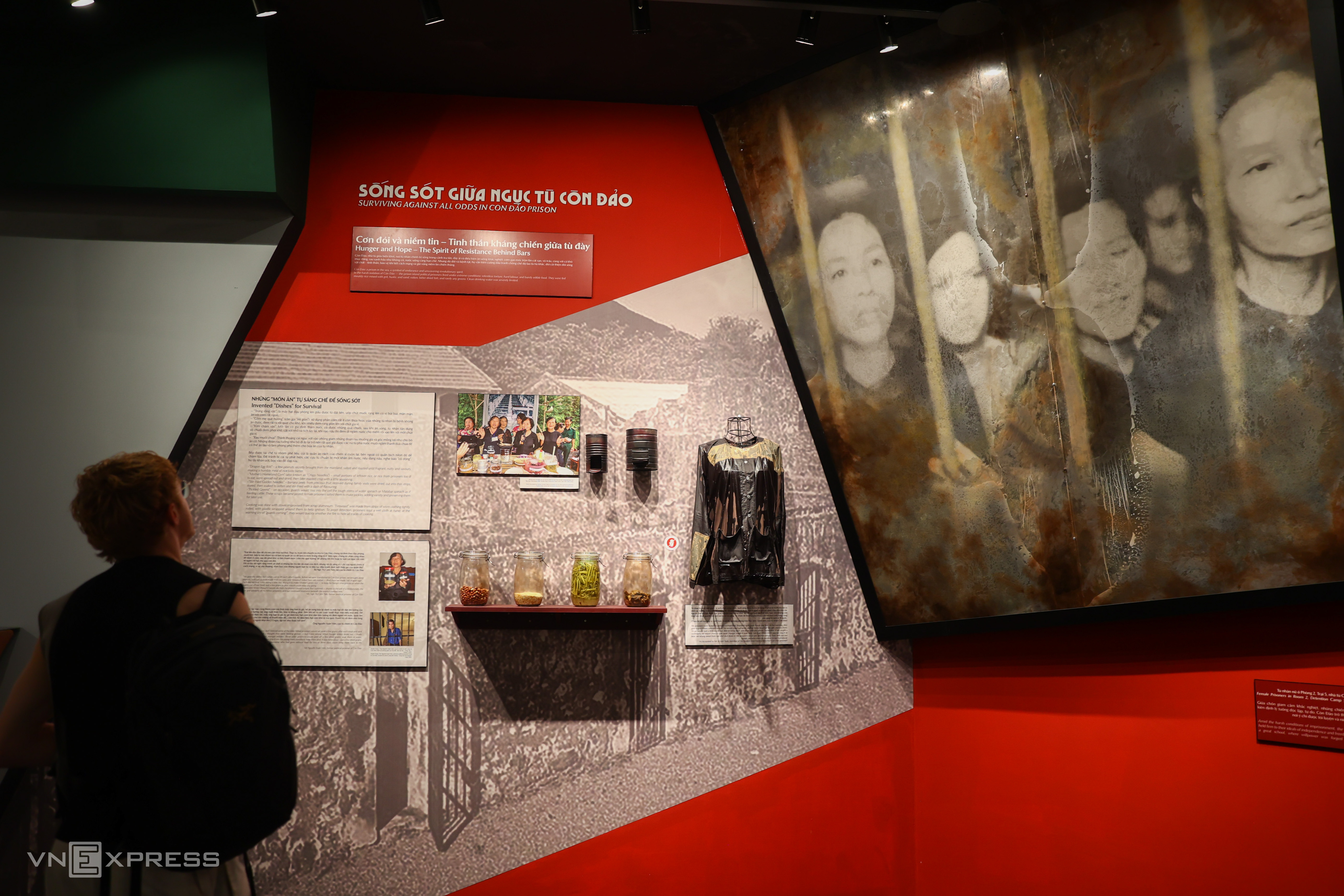 |
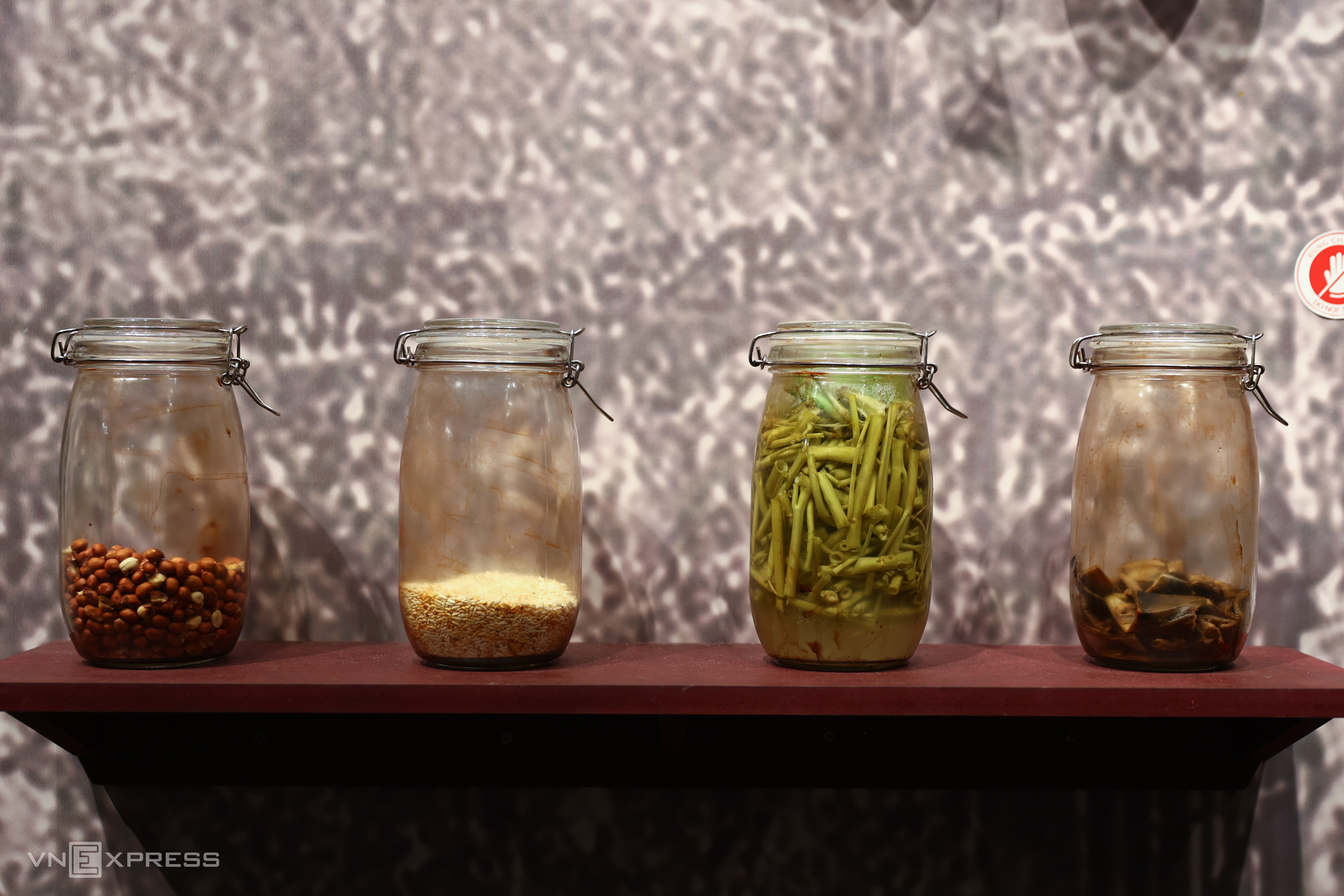 |
Another section depicts survival in Con Dao prison, where prisoners created dishes from banana peels, dried rice, water spinach stems, and banyan leaves.
These dishes had evocative names: "Dragon Eggs" were roasted peanuts smuggled from the mainland, "Mother's Scented Rice" was made from leftover or uneaten rice, "Stir-fried Golden Needles" were dried and rehydrated banana peels, and "Pickled Greens" were fermented water spinach stems discarded by guards.
 |
A model of a banyan tree, another food source for Con Dao prisoners, is also displayed.
During their limited time outdoors, prisoners would gather fallen leaves and young fruit to eat or collect dried seeds. They also snuck leaves into their cells to mix with spoiled rice and fish to mask the smell.
The banyan tree's antibacterial leaves were also used as poultices. It became a symbol of hope and survival within the prison walls.
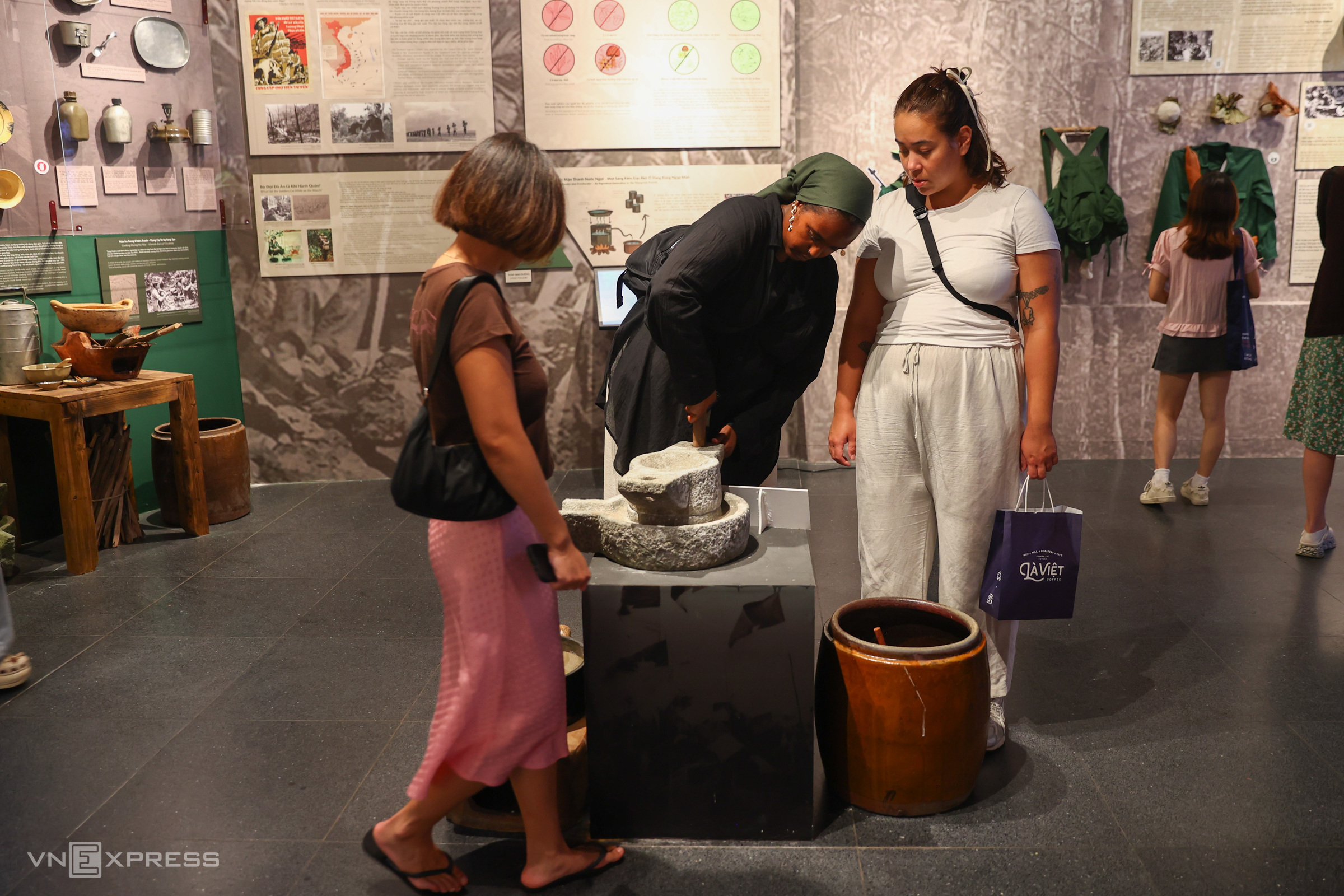 |
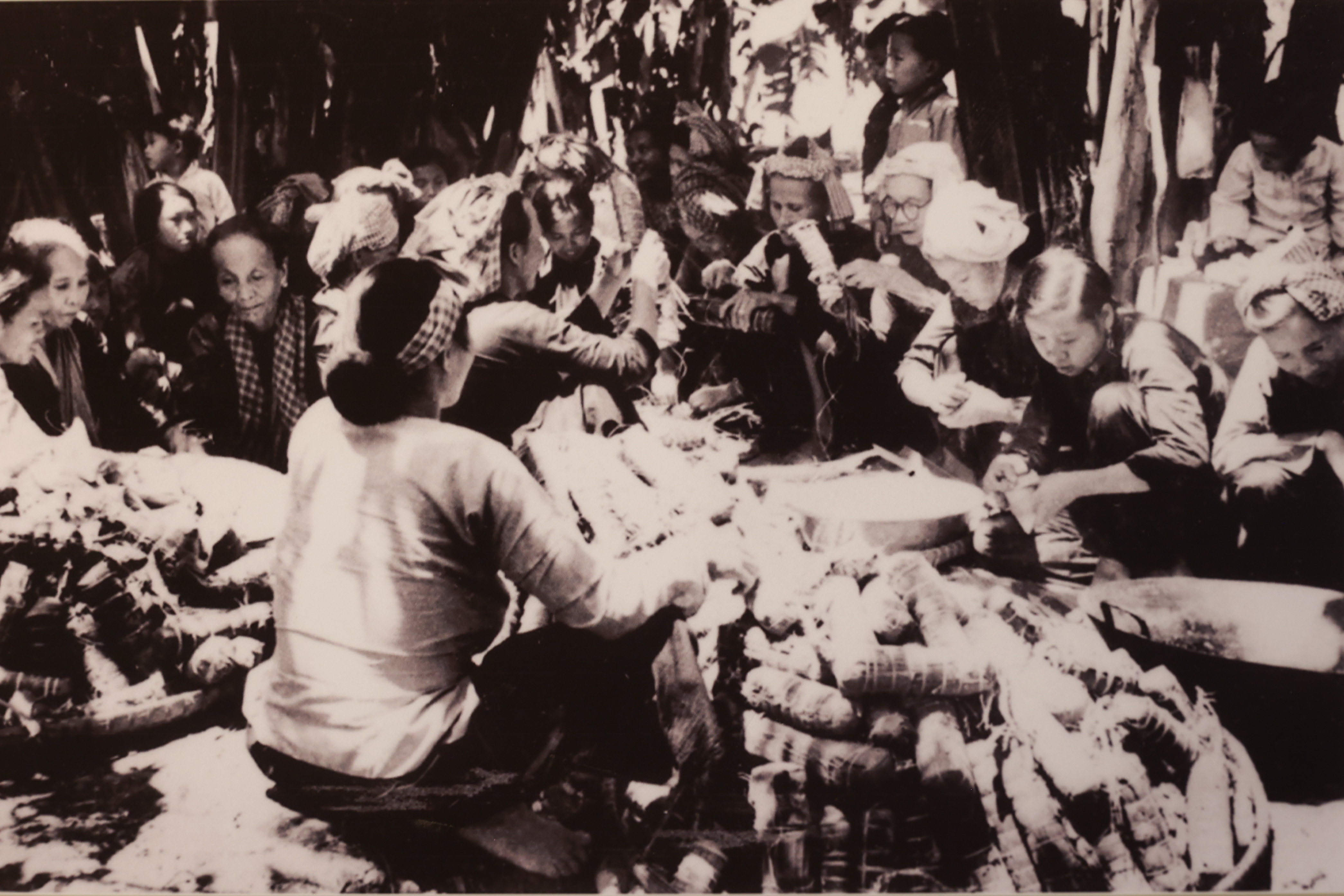 |
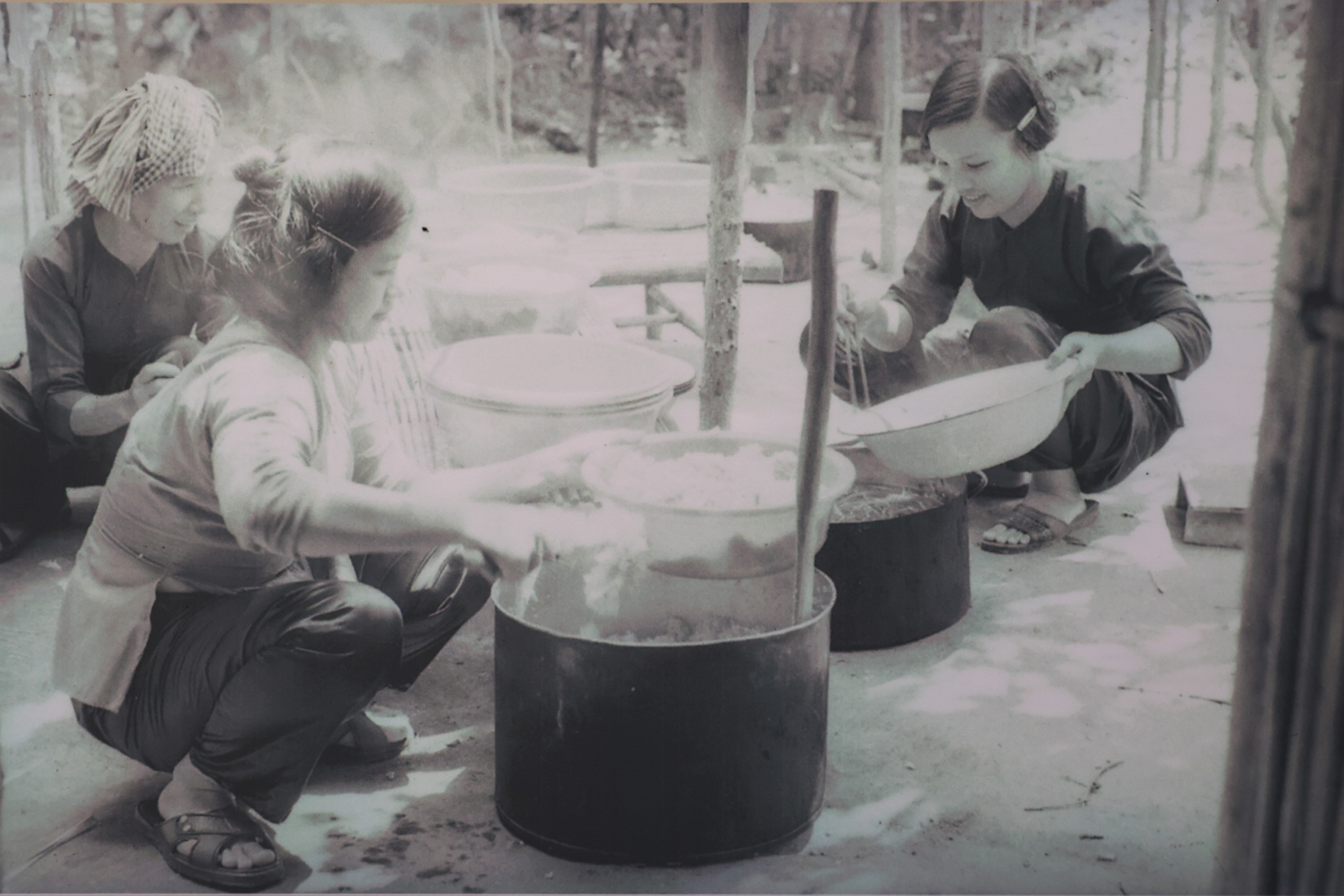 |
A photo of mothers making cakes for soldiers in Ca Mau in 1972 and "Lunch for Soldiers" in 1973 (second image) are also part of the exhibition.
The exhibition runs through December 2025. The museum entrance fee is 40,000 VND per person.
Quynh Tran



